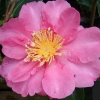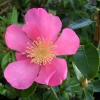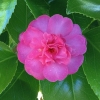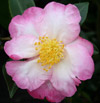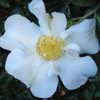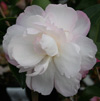Friday 10th March, 2017
The Camellia Story
Hi
Named Camellias are cloned, That means there was only ever the one of that name and pieces of that plant are taken to create new ones. Now, with Autumn upon us, it's a great time to be planting hedges and when you choose a named variety of say "
sasanqua" Camellia (commonly used for hedging), then you will have a cloned hedge where all the plants will behave the same as they are all genetically the same. The opposite of this is when you plant perhaps a seedling hedge then you will get some variance.
Personally I adore Camellias for hedging and I would always put in a cloned variety rather than a seedling.. Why? because the end result is going to look so much better and why Camellias? because they are so robust, rarely get anything wrong with them and can handle the hardest cutting back if they get to tall or wide.
Now how are these produced is mostly from cuttings which are more than likely taken from new wood that has hardened or firmed, but not going brown, as in older material. That's the skill of being a plant propagator knowing just when is the best time to collect the cutting wood. Too soft and the cutting will collapse and too old and the cells are not as active to try and produce roots. Once the decision has been made that the wood is ripe then the tip cutting will be collected and trimmed back, just below a bud and just above a bud, with only the top leaf retained so that the cutting can still photosynthesize. The top leaf is usually halved so that it reduces the water loss from the cutting and is less likely to collapse.
This is where its gets a bit interesting and technical as it will depend on your set up for growing cuttings. Most growers will take cutting of about 10 cm long which is usually about 4 to 5 buds in length and make quite a number of these depending of course of cultivar, variety and whats in fashion.
Once a cutting is made it will be what we call "wounded" which means removing a thin slice of bark from the base of cutting exposing the cambium, then these are then dipped into a rooting hormone suitable for semi hardwood cuttings. The rooting hormone helps initiate cell division thus forming a callus (undifferentiated cell tissue) and the hopefully the advent of new roots. The Cuttings are then inserted into a tray of river sand or a mix of sand and peat depending on the set up. About 100 per tray and then placed onto heated beds with misting if there is a commercial set up. The bottom heat helps stimulate the cambium cells to divide faster and rooting will occur in a quicker time than if no bottom heat.
Its a trade off between the media that you insert the cutting into and how much water you apply to the top and whether or not you are heating the bed as well. This process of cuttings could take 6 to 12 months depending on the wood, heat and the over situation.
Once the cuttings are rooted, the trays will be removed from bottom heat and hardened off so they can tolerate the next phase.
The next step is what we in the industry call tubing and the cuttings are carefully removed from the trays of sand roots, trimmed and potted into a 5 or 7 cm square pot with potting mix and usually placed in a sheltered and shaded area until they start to root into the tube. This stage may take again 6 to 12 months to have a small plant ready for the next year in its life.
From here if the plant is going to be container grown then it will be tipped and potted into a small planter bag called a PB 2 for another whole year, or if its going to be field grown then tipped and planted out in rows in the open ground for perhaps one to two years depending on the grade the grower wants to achieve.
Once the PB 2 plant has established the next step is another bigger planter bag. Tipped again and then potted into a larger bag called a PB8 and another year growing under its belt before its finally ready for the sale in a garden centre. The best quality plants are those that have several trims or tipping all along the way in their development.
Its quite the process and there is real skill in producing a beautiful well-grown even grade of the same plant. One has to be consistent at all stages right down to the tipping making sure that the plants are all in the same size bag with the same space between them and even the potting mix needs to be professionally made to achieve the best plants.
Just about all Camellias could be used for creating a hedge but typically
Sasanquas are the species that are used and there are many cultivars of these ranging from whites to pinks and even some reds. This group of Camellias can be distinct from other species in that they generally have smaller leaves and flowers than other Camellias. Often the flowers are fragrant and this group of Camellias often bloom earlier than others by flowering in the beginning of Autumn.
Sasanquas are also considered to be one of the hardiest group of Camellias though generally as a plant they are quite tolerant of most situation.
If you are planting a hedge then plant somewhere between 70 and 100 cm apart depending on grade and quality. Use a slow release Camellia fertilizer at planting, keep them weed free and fed until you get that desired classic look. Keep them trimmed as they grow and let the hedge thicken up.
Early Pearly A great one to hedge with pure white double flowers. This one, as its names suggests, flowers early in the Autumn making a fabulous show. Plant no further than 100 cm apart for an awesome hedge.
Silver dollar Another real goodie with a more compact habit and double white flowers. Lovely dark green foliage with a closer habit making for a lovey formal hedge.
Setsugekka. Another classic with typical sasanqua size foliage and attractive single white flowers with prominent yellow stamens showing. Easily grown and hardy.
Paradise Pearl There is a whole range of newer sasanquas being the paradise series and these are all equally as good as the traditional ones that we have always had.
Avocados not only delicious but a handsome evergreen tree
Avocados and in particular
Hass.... If you have a hankering to plant one of these at your place then finally we have some Hass spare. There has been a real shortage of avocados this season. It would seem that we also have a few
avocado Reed out there for sale as well but I suggest that you be in quick and get yours before they go.
More on the hedging front
Tea tree Leptospermum scoparium the native single white flowered one is back in stock... we sold out of these last time. Nice plants at 40/50 cm high, were $6.99 own to $5.99 each or 20 or more for $5.00
Kanuka or Kunzea ericoides is similar in habit to the tea tree also with white flowers, with slightly finer leaves. Nice plants at just $6.99 down to $5.99 or get 20 at $5.00 each
We have had some good rain and there is more forecast and coming over the weekend. The perfect time to get some planting done.
We have been onto and finished re-doing and planting the garden at the villa - our self-contained accommodation, it's been on the "to-do" list for ages, this early autumn is just perfect for planting
Whatever you have planned for the weekend, have fun! Cheers,
Lloyd, Harry and the Wairere Team
Make it a Wairere weekend where even GNOMES know that gardening's not a drag.
